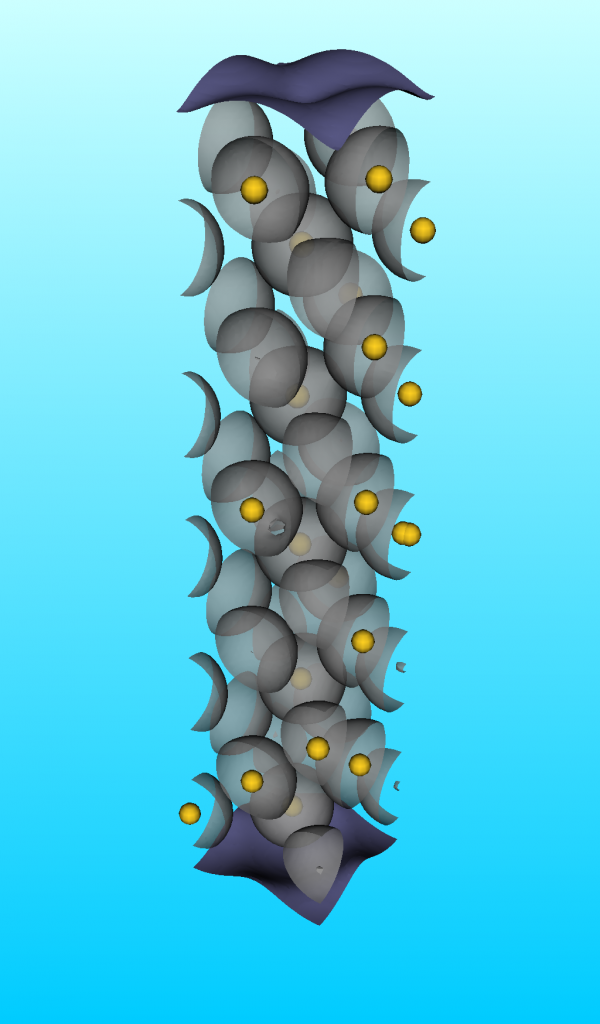Jean-Luc Fattebert (15-ERD-032)
Abstract
First-principles molecular dynamics is an atomistic modeling technique involving computation of the electronic structure of a molecular system. By including electrons at the quantum level, it leads to very realistic models of matter and atomic bonds. However, modeling in materials science with first-principles molecular dynamics is currently limited in atomic size because of its cubic complexity. We propose to develop, implement, and validate a truly scalable algorithm for first-principles molecular dynamics simulations of metals, so that one can simulate a number of atoms directly proportional to the number of processors and take full advantage of the millions of processors available on Livermore's BlueGene/Q supercomputer and beyond. We want to extend a recently developed O(N) algorithm (an algorithm whose performance grows linearly and in direct proportion to the number of atoms being simulated) to metallic systems by building a general reduced-basis set instead of maximally localized Wannier functions (orthogonal functions used in solid-state physics), and by replacing the scalable calculation of selected elements of the inverse of an algebraic Gram matrix with local computation of selected elements of a single-particle density matrix.
Low concentrations of an alloying species can dramatically change the physical properties of alloyed materials. But by definition, modeling low concentration requires a large total number of atoms and thus, large-size simulations. Furthermore, modeling large defects, such as realistic dislocations produced by radiation damage, requires large atomistic simulations. Currently, realistic modeling of such applications are often out of reach for first-principles molecular dynamics because of their length scale. We expect to provide a new algorithm, with which very-large-scale molecular dynamics applications will be tractable and provide new insights into materials properties. In particular, we will develop a new O(N) algorithm to compute the single-particle density matrix in the reduced-basis set composed of non-orthogonal localized functions. Exploiting the sparsity of that matrix, we will develop and implement a truly scalable, first-principles molecular dynamics simulation technology.
Mission Relevance
By developing the next generation of algorithms for first-principles molecular dynamics, we will enable researchers to take full advantage of supercomputers with millions of cores to study physics problems of high interest to LLNL and DOE—that is, calculate the properties of materials through ab initio modeling. This effort, therefore, supports the Laboratory core competency in high-performance computing, simulation, and data science. The work also addresses the need for better models of materials that can contribute to the Laboratory's work in advanced materials and manufacturing.
FY15 Accomplishments and Results
In FY15 we (1) added functionality to Livermore's existing molecular dynamics MGmol code (which is based on the density functional theory used to investigate the electronic structure of many-body systems) to enable computation of metals, even though the code still scales to the cubic power at this point; (2) implemented algorithms to enable computation of metals with localized orbitals, including a block conjugate-gradient solver to replace the acceleration model currently used for insulators, an augmented orbital-minimization method algorithm to deal with bad conditioning when localized orbitals present large overlap, and a new algorithm that we developed and implemented to preserve localized orbitals from spreading in molecular dynamics; (3) computed, with these algorithms, overlap and Hamiltonian matrices of dynamic systems in a basis of localized orbitals; and (4) began investigating O(N) algorithms and their accuracy to compute the single-particle density matrix.






